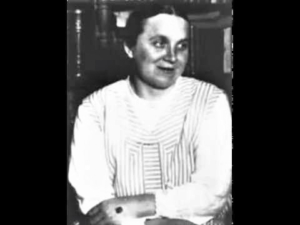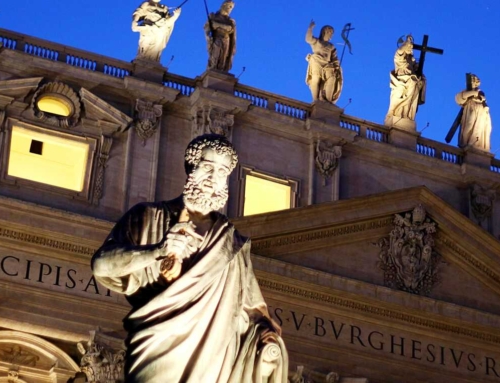The Church has always proclaimed the Cross of Christ as the mystical center of everything that exists. It is the truth of everything in the created world, the purification of the sins of all mankind, and the force of grace that conquers all evil.
The Cross is easy to find, though not easy to embrace. Perhaps that is why God, from time to time, chooses certain human beings to share His Cross in an intense and mystical way to help us see its meaning and fruitfulness. They are the stigmatists.
Brother Michael Freze, in his fascinating book on stigmatism, They Bore the Wounds of Christ, calls such people “living crucifixes” for their direct and mystical participation in Christ’s Passion.
Stigmatists keep the truth of the Cross before our eyes, especially in an age in which faith has been greatly weakened and degraded by the secular world.
A faithless age
It’s not the place for a history lesson here, but it’s worth mentioning that the modern age – roughly from the time of our Founding Fathers to today – has conducted more devastating warfare on people of faith than was done in any bloody persecution in earlier times.
We live in a truly faithless age, but for that reason the modern age has had more stigmatists than in the rest of Church history. The book just mentioned contains the fascinating biographies of more than twenty-five stigmatists of history, more than half of whom are from the modern era.
I believe the world needs these living crucifixes to turn our eyes to the Cross and to help us find meaning in the chaos of the modern world.
Permanent suffering for souls
 In my introduction to the 20th century stigmatist, Therese Neumann of Bavaria, I detailed the types of wounds she had and the inspirational effect that her witness had on her countrymen during the Nazi regime. I won’t repeat that material, but those who may have missed the email can read it in the newsletter archive, “The Peasant Woman Hitler Hated More Than the Allies”.
In my introduction to the 20th century stigmatist, Therese Neumann of Bavaria, I detailed the types of wounds she had and the inspirational effect that her witness had on her countrymen during the Nazi regime. I won’t repeat that material, but those who may have missed the email can read it in the newsletter archive, “The Peasant Woman Hitler Hated More Than the Allies”.
Therese Neumann’s life was one of permanent suffering for souls. She was marked with the wounds of Christ in 1926 when she went into a mystical state (called an ecstasy) on Holy Thursday night and began to experience the very effects of the suffering of Christ as if she were a participant in the original event of His Passion.
Eyewitness accounts of this experience describe her as physically suffering, bleeding from all her wounds, and responding in real time to the events she was “seeing” mystically. During this period, she went temporarily blind and actually shed bloody tears, as if hers was a permanent Agony in the Garden.
She remained in this state for the whole night and into the next day. The ecstasy ended as the Church celebrated the Good Friday liturgy. This pattern of mystical immersion in the Passion scene occurred in exactly the same way every year for the next thirty-six years. Other ecstasies occurred on approximately thirty-five Fridays each year for her entire lifetime.
A window into the Passion
During her ecstasies she would often describe what she was viewing, which included vivid descriptions of architecture and clothing, mannerisms, human relationships at the time of Jesus as well as the intense sufferings of the Savior. She even spoke unknown languages, including phrases in Jesus’ native language, Aramaic, which a scholar of the language claimed were both accurate and exhibited an ancient dialect that was unusual even to experts.
It is hard to believe that one person could be so united to Christ and His Passion. At the same time, every account of her personality indicated that she was a joyful, charitable, well-balanced person with a serene, often smiling face and a childlike purity despite her painful mystical experiences.
Redemptive sacrifices
Therese often heard about the illnesses and sufferings of others and asked God to let her take on their sufferings. When she did so, the people whose sufferings she adopted were always cured.
This is called “vicarious” suffering, which means suffering in place of others, and I don’t recommend it as a spiritual practice! One must be called to this type of heroism, which fit Therese Neumann’s vocation to suffering but is to be considered something out of the ordinary, even in charitable souls.
The rest of us offer our daily sufferings in union with the suffering of Christ and should only ask to take on another person’s sufferings when this is a clear indication from God, or in consultation with a spiritual director.
Therese also practiced “expiatory” suffering, which is suffering on behalf of others. This, together with vicarious suffering, is a perfect theology of the Cross of Christ, who suffered in place of humanity and for the sins of humanity. When Therese offered her suffering for others she obtained, through God’s mercy, many conversions of sinners.
A militant atheist from Austria came to see her one day with the intention of mocking her suffering and exposing it as a hoax. He often boasted openly, “Godless have I lived, godless will I die.” Once he visited Therese, his hardness of heart melted away, and he was converted in heart and soul almost immediately. He died several days later after going to Confession and receiving Last Rites.
This is just one of many stories of conversions that God granted by His grace through the expiatory sacrifice of Therese. Once again, a stigmatist shows that suffering, so difficult for us to accept, is actually a pathway to redemption for ourselves and others.
A gift for others
Every element of Therese Neumann’s mystical experiences was a message for the spiritual edification of others. Her sufferings were more attractive to others than the superficial allure of worldly entertainments. I’m sure this is why more than ten thousand American servicemen flocked to Konnersreuth after the war ended. In fact, this is living history for my own family. My dad had a close family friend who was stationed in Germany and actually met Therese personally.
Here are a few of her other mystical experiences that so edified souls:
- She had vivid visions of biblical events, even when not in the ecstasies of the Passion. These include visions of the life of Christ; the visit of the Magi; the life and death of Mary Magdalene; St. Peter being freed from prison; the fall of the rebel angels; various experiences of the life of Our Lady, and others.
- She could recognize an authentic relic by touching it, particularly relics of the True Cross which when placed near her wounds caused her to feel deep pain. She could also recognize whether a man was a priest if she touched his hand which held the sacred Host.
- Some claimed that she could see her guardian angel, but she said that she could “feel” the presence of her guardian angel next to her and other angels around her.
- She often predicted the outcome of events and warned people about immanent happenings, such as her journalist friend whom she informed about a Nazi search of his property which took place the next day.
- She often answered questions while in a mystical state, and priests testified that all the answers of this minimally-educated woman were doctrinally correct and extremely perceptive.
I’ve only begun to recount the spiritual fruitfulness of the life of Therese Neumann, but hers is a long and beautiful tale which merits deeper study.
At the end of this article I have placed references to three books about her and, of course, the vast resource of the Internet will bring up much more.
Beware, however! The pictures you may see of Therese Neumann’s suffering are pictures of real blood, wounds, and suffering. They are not easy to look at. And that’s the point.
They are pictures of a living crucifix – lest we forget the greatest act of love ever offered for the souls of men.
Soul Work
In the Christian mindset, all human suffering has meaning because it is – or can be – united to the sufferings of Christ on Calvary. There is no suffering that is “wasted” when it is offered as a sacrifice. This is why so many Christian martyrs and suffering souls are often attractive to us in the life of faith.
Try to imagine a world in which suffering is meaningless and cruel. It would be a world of “survival of the fittest” where evil and brutality reign. That is not God’s world. The Cross has changed all that meaningless suffering into permanent victory for souls.
Take a moment to offer some suffering of yours – physical, or especially, psychological – for the benefit of someone else. Do not count your personal cost and do not hope or try to see some kind of magical result from what you offer. The result remains in God’s hands.
The Cross, personally embraced, is like a tree that bears fruit where it is needed, when it is needed, however God determines it is needed. Trust that all your suffering of any type, offered as a sacrifice, will bear great fruit for the salvation of souls.
Sources:
Michael Freze, SFO, They Bore the Wounds of Christ: The Mystery of the Sacred Stigmata, Huntington, Indiana: Our Sunday Visitor, Inc., 1989.
Friedrich Ritter Von Lama, Therese of Konnersreuth: A New Chronicle, tr. Albert Paul Shimberg, Milwaukee, Wisconsin; The Bruce Publishing Company, 1935.
Albert Paul Shimberg, The Story of Therese Neumann, Milwaukee, Wisconsin: The Bruce Publishing Company, 1947.
———-
[This article is a companion piece to the Sacred Windows Email Newsletter of 03/07/21, “The German Peasant Hitler Hated More Than the Allies.” Please visit our Newsletter Archives.]




Leave A Comment